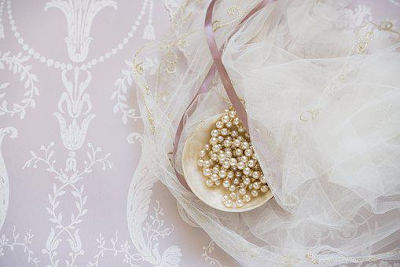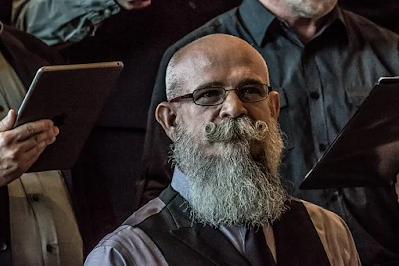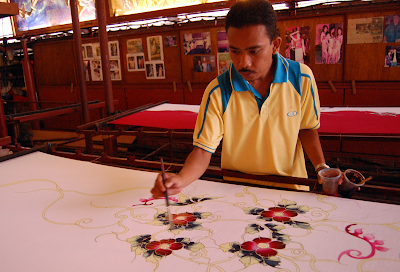Featured
- Get link
- X
- Other Apps
WHAT IS AN AESTHETIC DRESS?
The Great Exhibition of 1851 was held in London, and it featured the newest advances in manufacturing and design.
It received a favorable response from the public and the media, confirming the victory of increasing industrialization and mass manufacturing in the eyes of many.
Some people, however, who found this way of life more repulsive, sought an alternative by looking back in time.
What does aesthetic style mean?
Fashion changes with time, and this season there is a trend called "aesthetic" style that has gained attention.
This new movement's foundation is based on aesthetics, which takes into account the nature of beauty, art, and a desire for everything that is appealing to the eye.
For example, a more recent trend that combined grunge, gothic, and athletic looks with nods to 1980s and 1990s aesthetics gave rise to the concept of modern aesthetic style.
What Is The Origin Of The Aesthetic Dress?
The Pre-Raphaelite Brotherhood was founded three years earlier, in 1848, by young artists William Holman Hunt, John Everett Millais, and Dante Gabriel Rosetti, who were inspired by the art of the late medieval and early renaissance periods, which they believed produced a purer and more naturalistic style.
As a result, clothing played a significant part in depicting the characters; however, since no existing examples exist, references were drawn from tomb effigies, illustrated texts, and the artist's own creations.
Flowing fabric with delicate pleating dropping from the neckline were common in early aesthetic dress designs.
The folds then flowed into a tiny train at the back, softly gathering together at the natural, uncorseted waistline.
The sleeves were a distinguishing characteristic; unlike contemporary clothing, they were placed at the natural shoulder line and often embellished with fabric puffs at the sleeve head or collected along the length of the arm.
The abandonment of the corset, which was thought to offer a more natural figure along the lines of the Venus de Milo, enabled freedom of movement, though critics noted that “had Venus herself been compelled by a cold climate to drape herself, we have little doubt she would have worn stays, to give her clothes the shape they lacked”.
As a result, clothing reformers who spoke out against the harmful consequences of tightly tied corseting favored the design.
The two groups grew more entwined, and the Healthy and Artistic Dress Union was formed in 1890, with their views published in the magazine Aglaia.
What Is The Aesthetic Color Palettes?
Soft browns, reds, blues, and—the most popular and identifiable of all—a sage green, which was frequently referred to as "greenery yallery," were all key elements of the style.
Smocking or floral and biologically inspired needlework, with the sunflower and the lily as popular themes, were the sole means of decorating.
Accessories were kept to a minimal, with amber beads and eastern or oriental-inspired items being the most suitable choices.
The red-haired, pale-skinned beauties in Rosetti's La Ghirlandata typified the aesthetic lady herself, with their chiseled jawlines and sad eyes (1877).
Jane Morris, the designer William Morris's wife, is shown in an 1865 picture as the perfect embodiment of this ideal.
Her unkempt hair is pulled back carelessly, and her clothing is hanging in thick folds.
When Did Aesthetic Dresses Gain Popularity?
The style had truly caught the public's attention by the 1870s.
Mrs. Eliza Haweis wrote The Art of Beauty in 1877, in which she discussed the flaws of modern design and praised the lines of historical clothing.
The women magazine The Queen contacted her in 1878 and asked her to write several pieces about Pre-Raphaelite clothing.
“A significant shift has come over the manner of English clothing during the past, say, five years,” the Queen stated.
The world of artists initially began the concept of their wives and daughters wearing in accordance with... [their] surroundings, and the grandes dames of fashion were affected as a result” .
Historic eras were looted with a multitude of styles haphazardly put together under the word "aesthetic" as fashion coerced artistic clothing; Greek tunics, medieval sleeves, and Elizabethan ruffs were popular adornments for fashionable dress.
The Watteau-back dress, a partially popular design, was distinguished by a wide pleat of cloth flowing freely from the shoulders and caught up above the hem; it was inspired by eighteenth century sacque gowns, portrayed in the works of Watteau.
These designs were a characteristic of the tea gown, a loose casual garment that could be worn at home or when entertaining visitors for afternoon tea.
The year 1877 also saw the inauguration of the Grosvenor Gallery and the debut of the satirist George Du Maurier’s series of cartoons, published in Punch, and centered around a family known as the Cimabue Browns.
The pictures depicted the wearers of aesthetic clothing as lank and sluggish men and women—the males in velvet coats and long hair, the ladies with frizzed hair in long drooping garments— who constantly appeared to be pondering the emotional effect of art on life.
The International Exhibition held in London in 1862 had encouraged the increasing interest in oriental and exotic foreign products.
Arthur Lasenby Liberty, a teenage employee of Farmer and Roger’s Shawl Emporium on Regent Street, encouraged his bosses to establish an oriental department.
Owing to its great success, Liberty departed to start up his own department store in 1875.
His imported textiles and odd antiques were very popular with many painters, such as George Frederick Watts, James Whistler, and Frederick Leighton, who visited the store.
Liberty quickly started to create his own textiles suited to the English environment but with the characteristics and colors of imported Eastern samples.
In 1884, he established a dressmaking section, supervised by E. W. Godwin, an architect and honorary secretary of the Costume Society.
Godwin had created many of the costumes for his girlfriend, the renowned actress Ellen Terry, whose choice of aesthetic clothing was widely recognized.
In 1881, the aesthetic frenzy was at its height with the staging of Gilbert and Sullivan’s Patience and the commencement of Oscar Wilde’s lecture tours in America.
His lectures emphasized the significance of Liberty to the aesthetic movement and, as Alison Adburgham observes, this might “be considered to have planted the initial seeds that sprouted into the lengthy love affair between the Americans and Liberty’s of London”.
The aesthetic movement had a large following in America, the most famous proponent being Annie Jenness Miller who produced Dress: The Jenness Miller Magazine.
The social painter W. P. Frith caught the aesthetic scene in his work Private View (1881), which featured several of the prominent proponents of the movement, including as Wilde and Ellen Terry.
Seven years ago, some women loved to show themselves at public meetings in what are known as aesthetic clothes; in some instances the costumes were beautiful enough, in others they appeared to compete one other in ugliness of shape and strangeness of color, Frith remembered in his diaries of 1887.
This revealing remark also demonstrates how fashionable clothing has become a thing of the past.
With the popularity of the tea gown and the widespread availability of “artistic dress” in most department shops, many of its features had reached the mainstream.
Hamilton's of Regent Street is recommended in an 1889 guide to London for "those marvels of needlework: smocked frocks and smocked tea dresses." They do not, however, succeed only in so-called creative attire”.
Aesthetic clothing was no longer considered radical or revolutionary by the turn of the century.
While its themes may have lingered in the work of early twentieth-century designers such as Mariano Fortuny, whose pleated fabrics appear to be directly inspired by the dress worn in Rosetti's painting A Vision of Fiametta (1878), or Maria Monaci Gallenga's draped velvets, the sumptuous sophisticated style of art nouveau had captured the artistic imagination, and the soft muted colors and trailing drooping lace of art nouveau had captured the artistic imagination.
Find Jai on Twitter | LinkedIn | Instagram
See also:
Art and Fashion; Fortuny, Mariano; Wilde, Oscar.
References And Further Reading:
Adburgham, Alison. Shops and Shopping. London: George Allen and Unwin Ltd., 1964.
—. Liberty: A Biography of a Shop. London: George Allen and Unwin Ltd., 1975.
Costume: The Journal of the Costume Society 1 (1967), 2 (1968), 13 (1979), 21 (1987).
Douglas, Mrs. J. The Gentlewoman’s Book of Dress. London: Henry and Company, 1895.
Frith, W. P. My Autobiography and Reminiscences. Vol. 2. London: Richard Bentley and Son, 1887.
Haweis, Eliza. The Art of Beauty and The Art of Dress. New York and London: Garland, 1978.
MacDonald, Margaret F., et al. Whistler, Women and Fashion. New Haven, Conn.: Yale University Press, 2003.
Newton, Stella Mary. Health, Art and Reason: Dress Reformers of the 19th Century. London: John Murray, 1974.
Pascoe, Charles Eyre. London of Today: An Illustrated Handbook for the Season. London: Hamilton Adams and Company, 1889.
Punch. 14 September 1878, 9 April 1881, 30 April 1881.
The Queen. 24 August 1878.
Squire, Geo. Dress, Art and Society. London: Macmillan, 1974.
Thieme, Otto Charles, E. A. Coleman, M. Oberly, and P. Cunningham. With Grace and Favour: Victorian and Edwardian Fashion in America. Cincinnati, Ohio: Cincinnati Art Museum, 1993.
Frequently Asked Questions:
What does the term "aesthetic" in clothes mean?
One of the fundamental ideas of textile serviceability is aesthetics.
It is based on how one experiences touch and sight. Aesthetics refers to a product's appeal and look; this includes the fabric's color and feel.
What is Aesthetic Fashion?
A fundamental design concept, aesthetics determines what makes a design appealing.
Aesthetics as it relates to the visual realm comprises elements like balance, color, movement, pattern, size, form, and visual weight.
Designers boost utility with aesthetically pleasing layouts in order to compliment the usefulness of their creations.
- Get link
- X
- Other Apps















